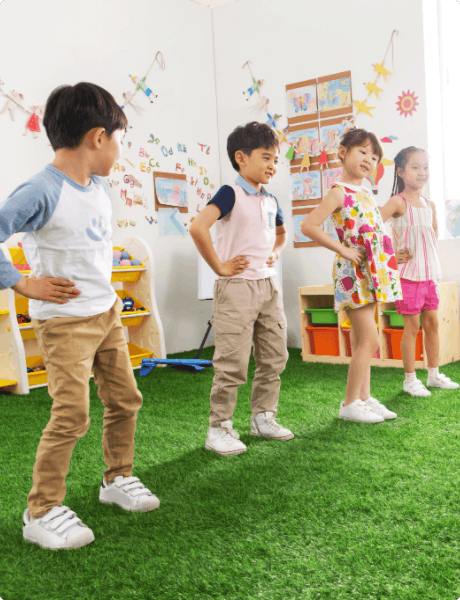
- Afrikaans
- Arabic
- Belarusian
- Bengali
- Czech
- Danish
- Dutch
- English
- Esperanto
- Estonian
- Finnish
- French
- German
- Greek
- Hindi
- Hungarian
- Icelandic
- Indonesian
- irish
- Italian
- Japanese
- kazakh
- Rwandese
- Korean
- Kyrgyz
- Lao
- Latin
- Latvian
- Malay
- Mongolian
- Myanmar
- Norwegian
- Persian
- Polish
- Portuguese
- Romanian
- Russian
- Serbian
- Spanish
- Swedish
- Tagalog
- Tajik
- Thai
- Turkish
- Turkmen
- Ukrainian
- Urdu
- Uighur
- Uzbek
- Vietnamese
artificial turf installation
Nov . 22, 2024 20:41 Back to list
The Benefits and Process of Artificial Turf Installation
Artificial turf has become an increasingly popular choice for both residential and commercial landscapes in recent years. Its numerous advantages, including low maintenance, durability, and aesthetic appeal, make it an attractive option for homeowners and businesses alike. This article will delve into the benefits of artificial turf and outline the essential steps involved in its installation.
Benefits of Artificial Turf
1. Low Maintenance One of the most significant advantages of artificial turf is its minimal maintenance requirements. Unlike natural grass, which needs regular mowing, watering, and fertilizing, synthetic grass typically only requires occasional rinsing to remove dust and debris. This not only saves time but also reduces long-term costs associated with lawn care.
2. Durability Artificial turf is designed to withstand heavy foot traffic and harsh weather conditions. It is built from high-quality synthetic fibers that resist fading, tearing, and staining, ensuring that it maintains its vibrant appearance for years. This durability makes it suitable for a variety of applications, from backyards and sports fields to commercial properties and playgrounds.
3. Water Conservation In an era where water scarcity is a pressing concern, artificial turf offers an environmentally friendly solution. It eliminates the need for regular watering, which can significantly reduce water consumption, making it an eco-conscious choice for landscaping.
4. Pest Resistance Natural grass can attract various pests such as insects and rodents. In contrast, artificial turf does not provide a hospitable environment for these unwanted visitors. This advantage makes it a safer choice for families with children and pets.
5. Aesthetic Appeal Artificial turf remains lush and green throughout the year, regardless of season or climate. This consistent appearance enhances the visual appeal of any landscape, creating a welcoming and attractive outdoor space that can increase property value.
The Installation Process
The installation of artificial turf involves several essential steps to ensure a successful and long-lasting result. Although many homeowners may choose to hire professionals for this task, understanding the process can help provide insights into what is involved.
artificial turf installation

1. Site Preparation The first step in installing artificial turf is to prepare the site. This includes clearing the area of any existing grass, weeds, rocks, and debris. The soil may also need to be excavated to achieve the desired depth, typically around 3 to 4 inches, to accommodate the turf and a base layer.
2. Base Layer Installation After preparing the site, a base layer of crushed stone or decomposed granite is typically laid down to provide proper drainage. This layer is compacted to create a stable foundation, ensuring that the turf will not shift or settle over time.
3. Weed Barrier Installation To prevent weeds from growing through the synthetic grass, a weed barrier fabric is often placed over the base layer. This step is crucial to maintaining the appearance and longevity of the turf.
4. Turf Laying Once the base is prepared, the artificial turf is rolled out over the area. It's essential to ensure that the seams are aligned properly and that the turf is laid in the correct direction so that the fibers appear uniform when viewed from different angles.
5. Cutting and Seaming Any excess turf is trimmed, and the seams are secured using adhesive or turf tape to maintain a seamless look. This step requires precision to ensure that the edges blend perfectly, creating a natural appearance.
6. Infill Application In some cases, an infill material, such as silica sand or rubber granules, may be added to help keep the turf fibers upright and provide cushioning. This infill also aids in water drainage and minimizes static electricity.
7. Final Touches The installation process concludes with brushing and fluffing the turf to enhance its appearance. Any remaining debris is cleaned away, leaving behind a lush, green landscape ready for use.
Conclusion
Artificial turf installation offers a host of benefits, from low maintenance to water conservation. By understanding the advantages and the installation process, homeowners and businesses can make informed decisions when considering this versatile landscaping option. With its durability and aesthetic appeal, artificial turf provides a sustainable solution to outdoor spaces, ensuring they remain beautiful for years to come.
-
The Benefits of Artificial Turf for Indoors
NewsJul.15,2025
-
How Artificial Grass Suppliers Ensure Quality Products
NewsJul.15,2025
-
Artificial Grass and Pets: A Space for Relaxation
NewsJul.08,2025
-
Balcony & Outdoor Decoration with Artificial Grass
NewsJul.08,2025
-
Best Indoor Artificial Grass for Home
NewsJul.07,2025
-
Best Pet Turf for Dogs: Safe & Durable Artificial Grass Options
NewsJul.07,2025
Products categories









